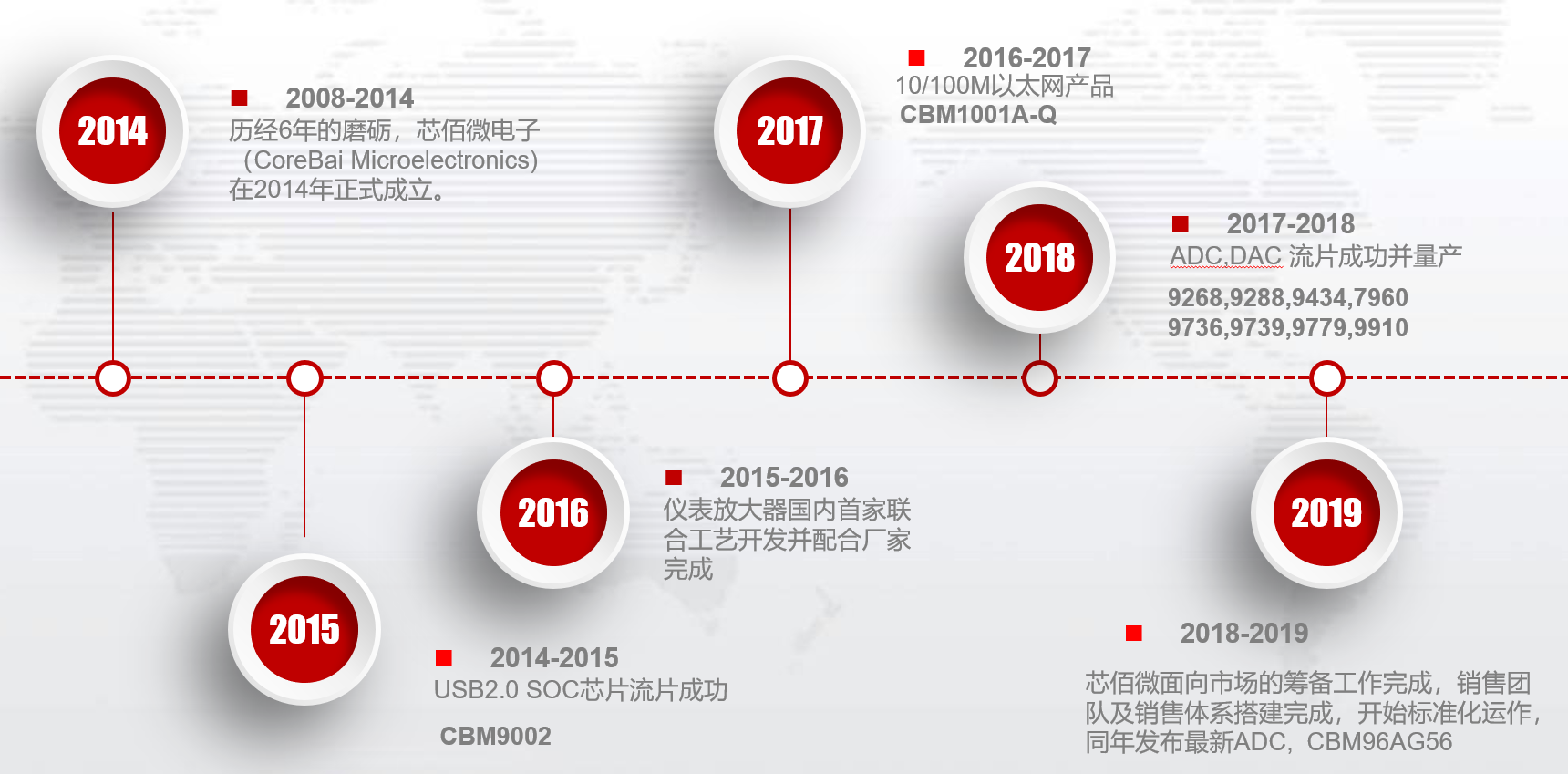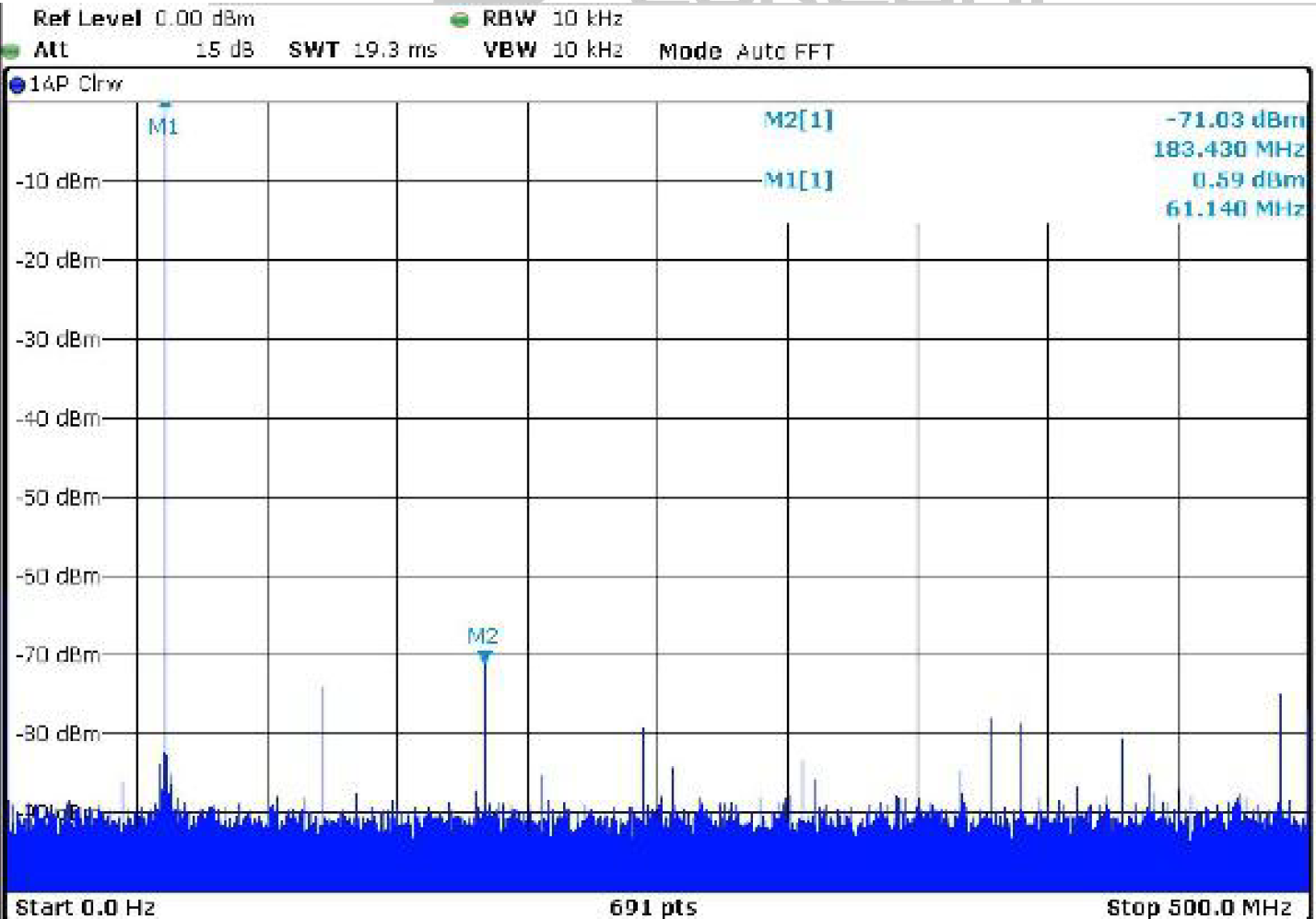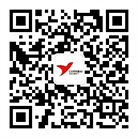 Released:2019-11-20 00:00:28
Released:2019-11-20 00:00:28 Views 2023 次
Views 2023 次 CorebaI Microelectronics was established in 2008, initially serving national science departments and research institute clients. In 2014, XINBAI Microelectronics Beijing company was formally established. In 2017, ADC/DAC products were officially released to the public. After ten years of technical accumulation by hundreds of engineers, XINBAI Microelectronics is now in the stage of mass production and providing ADC/DAC products to customers. In 2019, XINBAI Microelectronics officially stepped out from behind the scenes and embarked on the path of transforming domestically produced ADC/DAC products for civilian use, aiming to support the development of domestic enterprises.
CorebaI Microelectronics was established in 2008, initially serving national science departments and research institute clients. In 2014, XINBAI Microelectronics Beijing company was formally established. In 2017, ADC/DAC products were officially released to the public. After ten years of technical accumulation by hundreds of engineers, XINBAI Microelectronics is now in the stage of mass production and providing ADC/DAC products to customers. In 2019, XINBAI Microelectronics officially stepped out from behind the scenes and embarked on the path of transforming domestically produced ADC/DAC products for civilian use, aiming to support the development of domestic enterprises.



Corebai Microelectronics was established in 2008, originally serving national science departments and research institute clients. In 2014, XINBAI Microelectronics Beijing company was formally established. In 2017, ADC/DAC products were officially launched to the public. After ten years of technical accumulation by hundreds of engineers within the company, XINBAI Microelectronics has now reached the stage of mass production and providing ADC/DAC products to customers for use.

Corebai Microelectronics was established in 2008, originally serving national science departments and research institute clients. In 2014, XINBAI Microelectronics Beijing company was formally established. In 2017, ADC/DAC products were officially launched to the public. After ten years of technical accumulation by hundreds of engineers within the company, XINBAI Microelectronics has now reached the stage of mass production and providing ADC/DAC products to customers for use.

Digital-to-Analog Converter (DAC), also known as a D/A converter, is a device that converts digital quantities into analog signals. A DAC typically consists of four main components: a weighted resistor network, an operational amplifier, a reference voltage source, and analog switches. In most cases, a Digital-to-Analog Converter is used in conjunction with an Analog-to-Digital Converter (ADC) in a digital system. An ADC transforms continuous analog signals into discrete digital signals, while a DAC converts digital signals back into analog form for practical applications. This process of converting digital signals back to analog is known as "digital-to-analog conversion."

High-speed and high-precision DACs, as core components in signal processing chains, convert digital signals into analog signals. They are widely used in wireless broadband communication systems, particularly in high-performance military and civilian fields such as radar and satellite communications. High-performance data converters can effectively reduce system complexity and costs, enhance interference resistance and communication quality, and increase channel capacity and transmission speed. Currently, the main interface methods include CMOS, LVDS, and JESD204B serial interfaces. The structure is as shown in the following diagram:

Key performance indicators for evaluating high-speed DACs mainly include accuracy (determining the highest effective number of bits), sampling rate (determining the maximum bandwidth of convertible signals), and dynamic range (determining the ability to distinguish between small signals and distorted signals). The higher these indicators are, the better.
The accuracy in a DAC is divided into absolute accuracy and relative accuracy. Absolute accuracy is defined as the difference between the ideal output and the actual output, including various offset and non-linear errors. Relative accuracy is defined as the maximum integral non-linearity error. Accuracy is expressed as a proportion of full scale and is represented by the number of effective bits. For example, an 8-bit accuracy indicates that the error of the DAC is less than 1/82 of the full-scale output. It is important to note that accuracy is distinct from resolution. A DAC with a 12-bit resolution may only have a 10-bit accuracy, while a DAC with a 10-bit resolution may have a 12-bit accuracy. Having accuracy greater than resolution means that the DAC's transmission response can be controlled relatively accurately.
The conversion speed is generally determined by the settling time. From the moment the input changes from all zeros to all ones until the output voltage stabilizes within the range of FSR ± ½ LSB (or specified as FSR ± x% FSR), this period is called the settling time. It is the maximum response time of the DAC, used to measure the speed of conversion.

Spurious Free Dynamic Range (SFDR) refers to the dynamic range without noise and harmonics, where noise and harmonics are collectively referred to as spurious signals.
Currently, high-speed and high-precision DAC products are mainly monopolized by American companies such as Analog Devices, Inc. (ADI) and Texas Instruments (TI). The benchmark set by Europe and the United States for restricting the import of high-speed and high-precision DAC chips from China is 12 bits, 1.25 GS/s, with a dynamic range of 68 dB when converting a 100 MHz signal.

Corebai Microelectronics (COREBAI) has introduced a series of DAC products to cater to the majority of communication and industrial control customer applications. The high-speed DAC and DDS products are mainly used in the following fields:
Mainly used in the terminal market for digital RF transmission:
Base station communication - LTE and GSM
Point-to-point microwave RF
Satellite communications
Broadcasting & cable TV
Radar
Military industry - electronic warfare and communication
Test equipment - communication testers and waveform generators

Corebai Microelectronics was founded in 2008. In 2014, Corebai Microelectronics (Beijing) Co., Ltd. was officially established, and in 2019, the company officially launched its products under the Corebai brand. The product range includes over 300 models across six main categories, with key products such as ADC/DAC, USB components, interface circuits, general-purpose operational amplifiers, high-voltage operational amplifiers, and instrumentation amplifiers.
At present, the company's distributors include Weiken International, Xinye Electronics, Shenzhen Easy Control, Jiade Intelligent, among others. For more information on distributors and product specifications, you can visit www.corebai.com.
010-62106066
( Monday to Friday 9:00 - 18:00 )
 704-705, Block D, Building 2, No. 9 Fenghao East Road, Haidian District, Beijing
704-705, Block D, Building 2, No. 9 Fenghao East Road, Haidian District, Beijing

Wechat Public Account